I used to love going to the circus as a young child. One of my fondest memories are watching the artists do amazing stuff with their bodies, showing their talent and abilities. That has always been an inspiration to me. However, I had never really considered doing something of the sorts myself. Until last year in August. I saw that there was going to be an Erasmus+ Training course on Youth Circus and I got incredibly excited. I knew I had the incredible opportunity to experience the adventure of a lifetime. It was in sunny France, a beautiful country that I had always dreamed of visiting as well. So – I applied.
A few weeks later I received the news. I was going! I can’t begin to tell you how happy I was, I was jumping all around with excitement. And I was even happier when I went there. It was incredible, being able to try something new every day. I was learning how to juggle, how to dance with poi, how to play diabolo, how to walk on a slackline, how to do acrobalance, how to make balloon animals and so much more. And during this time, I also got to meet so many amazing people from all around the world. It’s one of those things I will remember all my life, and I can’t wait to introduce you to the amazing trainers that made this possible.
They will tell you all about the curious, adventurous world of Youth Circus, which is not only for the audience’s enjoyment, but much more than that – for yourself. It’s an initiative that can change lives, it can give you skills to impress your friends and loved ones, it can spark a passion and overall – it’s something that can change your life.
Keep in mind as you’re reading this article – all of the photos are of people who had no circus experience. Imagine what you can learn in just a week!
Hi! Can you introduce yourself?
I’m Denis, 38 years old, I am from France but I live in Slovenia most of the time. I like outdoors, hiking, climbing, swimming, gardening, playing music, photography and many other things
My name is Anja Mikič Crovella, I am 39 years old from Slovenia. I like travelling, hiking, partner acrobatics, swimming, yoga, dancing, socializing.
How did you get into this line of work?
Denis : I started as a youth leader in summer camps when I was 18. After that, working with groups of youth became my full time profession. I worked with youngsters with fewer opportunities, pupils, teenagers… Mostly in the mountains doing outdoors activities.
As a young person, I practiced juggling and other circus disciplines for my hobby and when I moved to slovenia close to 15 years ago, I joined the Slovenian association for circus pedagogy and continued to do youth work but this time, instead of organising sports activities, I organised circus activities.
Anja : While studying social pedagogy my colleague saw youth circus performance in Holland and got really inspired. She showed us few acrobatic figures and from there on we started to explore the world of circus pedagogy by ourselves.
Can you tell us a bit more about the history of youth circus?
Denis : Youth circus is a fairly modern concept based on the idea that circus disciplines are not reserved to either freaks or professional artists but are accessible to everybody, regardless of their age, gender, abilities…
There are early occurrence in the beginning of the 20th century of people using circus to lift street kids out of poverty but the idea really took hold in Europe in the 60’s and 70’s together with the shift from the classical circus (traveling families and animals) to the modern circus (integration of other arts in performances). Many social workers discovered the social and personal benefits of organizing such activities for youngsters.
Youth circus are fairly common nowadays in Western Europe (especially in France). The rest of Europe is slowly catching up now.
Anja : In the early 20th century first child and youth circuses began to appear.
In 1917, EJ Flanagan Nebraska (USA) founded a place for orphaned boys and called it ‘Boys Town’. He started to use circus as pedagogical tools. Some of the boys went on a tour with a caravan moving from town to town, and performing various acts such as music, acrobatic and theatrical elements and earned their living with it.
In the last 70 years and especially in the last 20 years there has been a notable increase of creation of child and youth circus around the world.
What is the difference between a youth circus and a conventional circus?
Denis : As mentioned, youth circus are open to everyone and the youngsters participating have a strong power of decision over the activities. They decide what they want to learn, perform… and the trainers are there to facilitate the process. The focus is on the participants and the learning process regardless of the results as opposed to the classical circus where participants are chosen according to their abilities and told what to do, what to train and what to perform for the sole benefit of the audience.
Anja : In Youth Circus it is not just about learning circus skills, it is about conveying values such as cooperation, trust, responsibility, persistence… through the process of learning different circus skills. The Youth Circus is aimed at amateurs that practice circus as a hobby, with no pretension to be a professional artist, while circus schools train professional circus artist. Participants are actively involved in the creation of the performances, and they contribute with their ideas and skills. The trainer does not impose his way to create performances but is more of a coordinator and councillor. In the Youth Circus, the participants are the one who are in foreground, they are the one who are important. The audience is in background. The process of creating the performance and all what we learn during it is more important than the performance itself.
And most importantly, Youth Circus is accessible to everyone, regardless of their origin, gender, social class, religion, skills…
Who can join a youth circus?
Denis : Youth circuses offer various programs targeting a different public: children, teenagers, parents and adults.
There are basically two approaches to youth circus: use circus as a leisure activity or as a tool of social work. The profile of the participants then depend on the goal of the program and the background of participants can be very diverse.
Anja : Everyone can join youth circus. It is accessible to everyone, regardless of their origin, gender, social class, religion, skills… Youth circuses mostly focus on youngsters and children but some of them have classes for adults as well.
What are some challenges a person might face in a youth circus?
Denis : There are many disciplines that one can experience in a youth circus and all of them present rewards but also challenges:
Juggling is a fairly individual activity that can provoke frustration in some individuals Acrobalance and group acrobatic is based on trust and cooperation, two qualities that don’t necessarily come naturally to everyone Aerial and balancing activities involve a controlled amount of risk and one sometimes needs to conquer his own fears
Anja : Some disciplines are harder to learn than others and some people learn faster than others. So you should not compare yourself to others. We all have our own pace of learning, and we should respect that.
When people see someone doing some circus skills they think “oh that looks so easy”, and once they try, they might get disappointed as it might not be so easy for them. So it is important to keep on practicing and to be persistent and not to give up when we face challenges. On the other hand there are some disciplines which look very impressive and are not so difficult :).
There are many different disciplines in circus so it is good to explore different things and see which one we like and which are those we do not like so much.
How long have you been working with young people and youth circus and how has that changed you?
Denis : I have been working with young people for 20 years and a solid 15 years with circus.
I can’t say youth work changed me because I went straight away from being a youngster myself to working with young people so that is pretty much all I know.
However, I can never cease to be happy when I see the transformation of participants who attend circus activities and the smile that it puts on their faces.
Anja : I have been working with youth circus since 1999. I studied social pedagogy and when I discovered that circus can be used also as pedagogical tool (circus pedagogy) it really inspired me. I used it in my work with youngsters with fewer opportunities. I think it is a very attractive, effective and creative method with which you can approach youngsters in a different and fun way. Circus pedagogy shaped my professional path, inspired me to open my own association and took me to different parts of the world.
You probably have a lot of very interesting experiences with this line of work. Can you tell me more about one or two that really stick out?
Denis : I once worked on a project in a residential home in Slovenia. The kids there were either orphans or had serious family issues. They created a performance that they chose and the theme was the voyage of a kid through various magic circus land all the way to a meeting with a loving father figure.
It was touching to be able to give the opportunity to these kids to express their suffering in such a cute and creative way and for them to be rewarded with a standing ovation by the public.
Anja : Once we had a project with Roma children. We were meeting in their school for circus lessons. After the project was finished they invited us to their place where they live, so we could meet their families and friends and also talk with them. It was very enriching experience for us. We could see the conditions they live in (some of them had no electricity or water) and also how they behave and communicate with each other. They were so proud to introduce us to their friends and show off with their circus skills. Their behavior really changed. In school, they were not really showing so much interest in circus skills and not paying much attention to what we were trying to teach them. In their home environment suddenly they all wanted to show what they learned to their family and friends and learn new circus skills and were asking us to teach them.
What is the biggest change you’ve seen in people who take part in youth circus? How do you think that influences them?
Denis : I would say that the biggest change I noticed in participants is the way most of them get to be comfortable with who they are and discover their hidden potential. The mutual recognition within the group raises their self-esteem and gives them more confidence in themselves.
Anja : For me it is always really nice to see how people come, not knowing any circus disciplines, and after one week of intense training they all manage to do some tricks. They even manage to create a short circus performance which they perform in the public. On the beginning they are unsure of themselves and anxious about the performing in public but once they are on stage they give their best, they make it and people clap and performers feel so happy and so proud of themselves. And that gives them a boost in their self-esteem. I am really happy to have the chance to play a part in that.
Do you think this is something that can change lives?
Denis : For some people, circus become a way of life so yes, it can change lives.
I have introduced many people to circus over the years and a certain number of them both young and older and now either professional artists or very active in the field of social circus.
Anja : Sometimes people see a pyramid, and they get scared, they say I can not do that. Or they try juggling and it does not work, they get frustrated, it is hard but that suddenly they manage to juggle, and they are so happy. And it is so nice to see how they slowly open up, they try new things, and they see they succeed in them and enjoy them. They overcome their fears and their borders and it is fulfilling to see that. They realize that they are capable of much more than they think they are and i think this awareness can change peoples lives. They learn that they can face their fear or frustration and overcome it.
You’ve organized some youth exchanges on this topic. What has been your experience with those?
Denis : I have organized a couple of youth exchange and in general it was great. The combination of young people from different countries being together and taking part in activities that enables them to at the same time shine in front of others, collaborate closely and give them the opportunity for physical contact with one another in a non-ambiguous context is a very positive experience for them.
On the other hand, as a leader, having a tight and enthusiastic group can be challenging to manage.
Anja : In the past we were organizing youth exchanges for youngsters but in the last few years we changed our program and instead we are organizing training courses for youth workers. We want to spread this amazing tool to others who work with youngsters. Every training course is a special experience. I always get amazed how connecting circus is. First day people do not know each other and after one lesson of acrobalance they say they feel like they would know each other for long. I think that is the beauty of circus pedagogy. We could talk about team work, trust, responsibilities and cooperation but instated of talking we do an acrobalance workshop where people learn in concrete situation the importance of cooperation, trust and taking the responsibility for others and our selves. As without cooperation, trust and responsibility they can not build an acrobatic pyramid, and they can not create a performance together.
What do you think the future of youth circuses looks like?
Denis : In many countries, youth circus are well established much like sports clubs, and they will stay for a long time, in other countries, circus is still associated with the classical image and people do not see it as a legitimate activity for everyone. Yet there are many people working everywhere for the recognition of circus and youth circuses and slowly it becomes a more normalized thing to do.
Anja : I believe it will get even more recognition. Especially in the Balkan area. I think it is quite developed in some countries while in others it really not.
I wish it would be more integrated in the school as well, maybe in gym classes. It is a fun physical activity which involves cooperation instead of competition and I think that would be very welcome in our school systems which is very competitive.
What is something simple our readers can do at home and is related to youth circus?
Denis : Learning how to juggle with three balls sound difficult but with proper instruction it can be done in a matter of 1 or 2 hours and ensure loads of fun anywhere anytime. You need little equipment and little space and off you go to learn an infinite variation of tricks.
Anja : They can take same size lemons or apples and try to learn how to juggle. There are lots of tutorials on internet about how to juggle. Also, they can make their own juggling balls (there are tutorials on internet) and try to juggle them.
Where can people learn more about youth circuses?
They can look on internet if there are any youth circus in their country and see if they are able to join them.
EYCO (European youth circus organization) https://www.eyco.org/ also has some information about youth circuses.
Reg Bolton wrote a lot about youth and social circuses and has some books available on line.
Where can people learn more about you/your organization?
They can follow our FB page: Cirkus La Bulle (https://www.facebook.com/Cirkus-la-bulle-100647854672020/)
They can visit our web site: https://cirkuslabulle.wordpress.com/
Or write to us: cirkuslabulle@gmail.com
Will you be organizing more youth circus initiatives in the future? Where can our readers find out more if they want to join?
Denis : We organize a few circus pedagogy trainings every year, and we announce them on our web page.
Anja : We are preparing international training courses on circus pedagogy as a tool of youth work and as soon as the situation allows we will start to implement them. If there are some organizations interested in becoming our partners in future projects and want to send us some of their youth workers they can contact us on cirkuslabulle@gmail.com
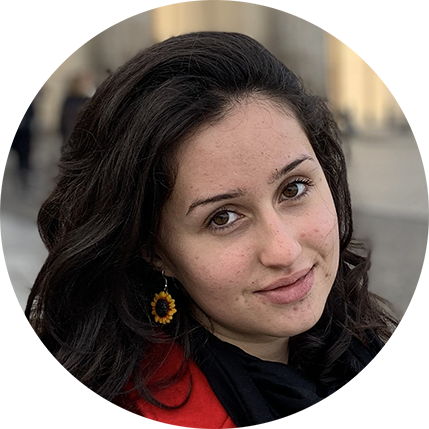 This article was written by Detelina, volunteer at Sunrise Project France since April 2020. She is a bulgarian citizen and likes to learn, write, cook and meet new people.
This article was written by Detelina, volunteer at Sunrise Project France since April 2020. She is a bulgarian citizen and likes to learn, write, cook and meet new people.

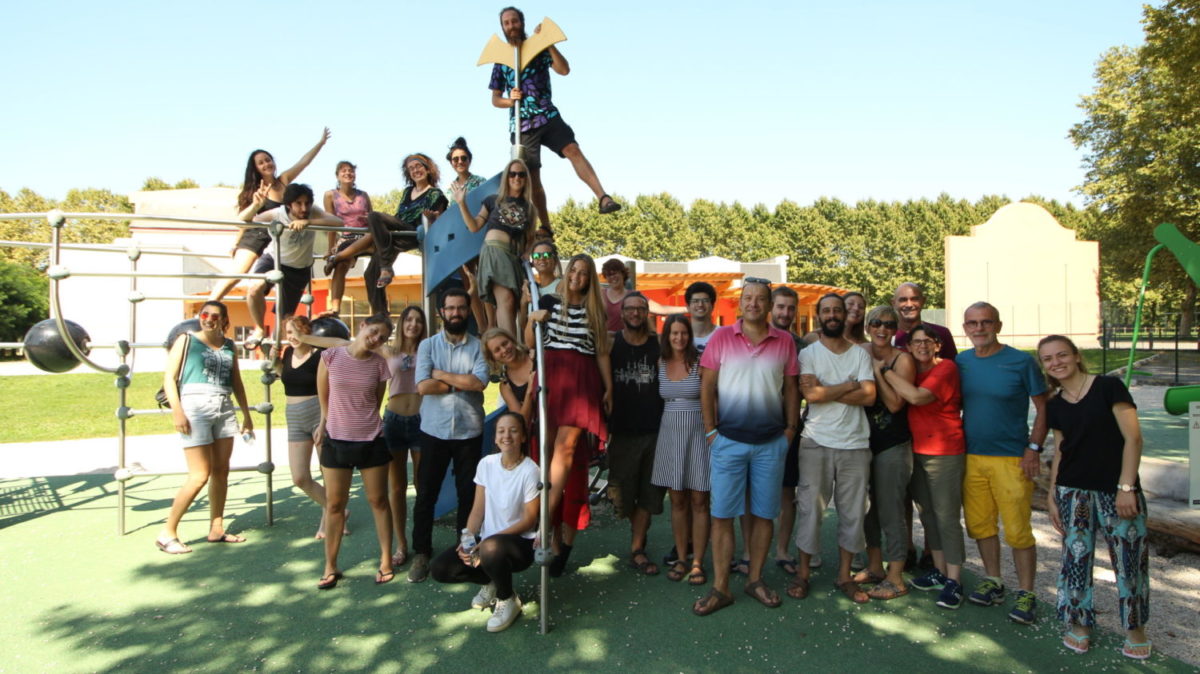
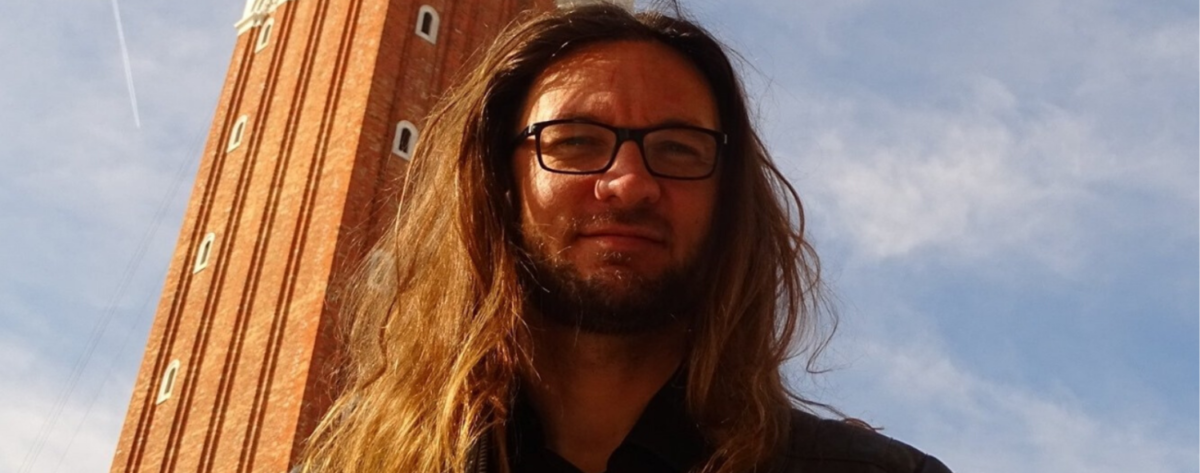
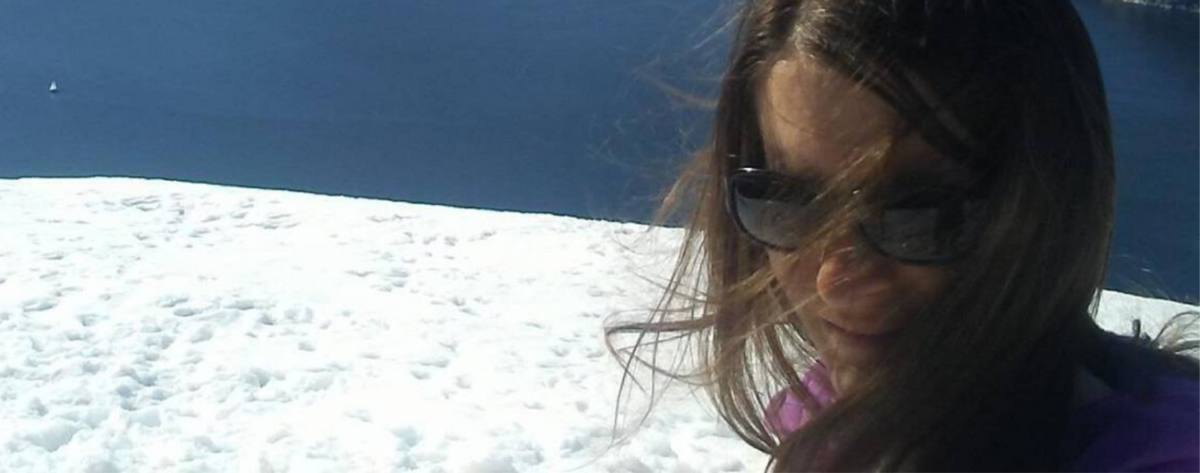
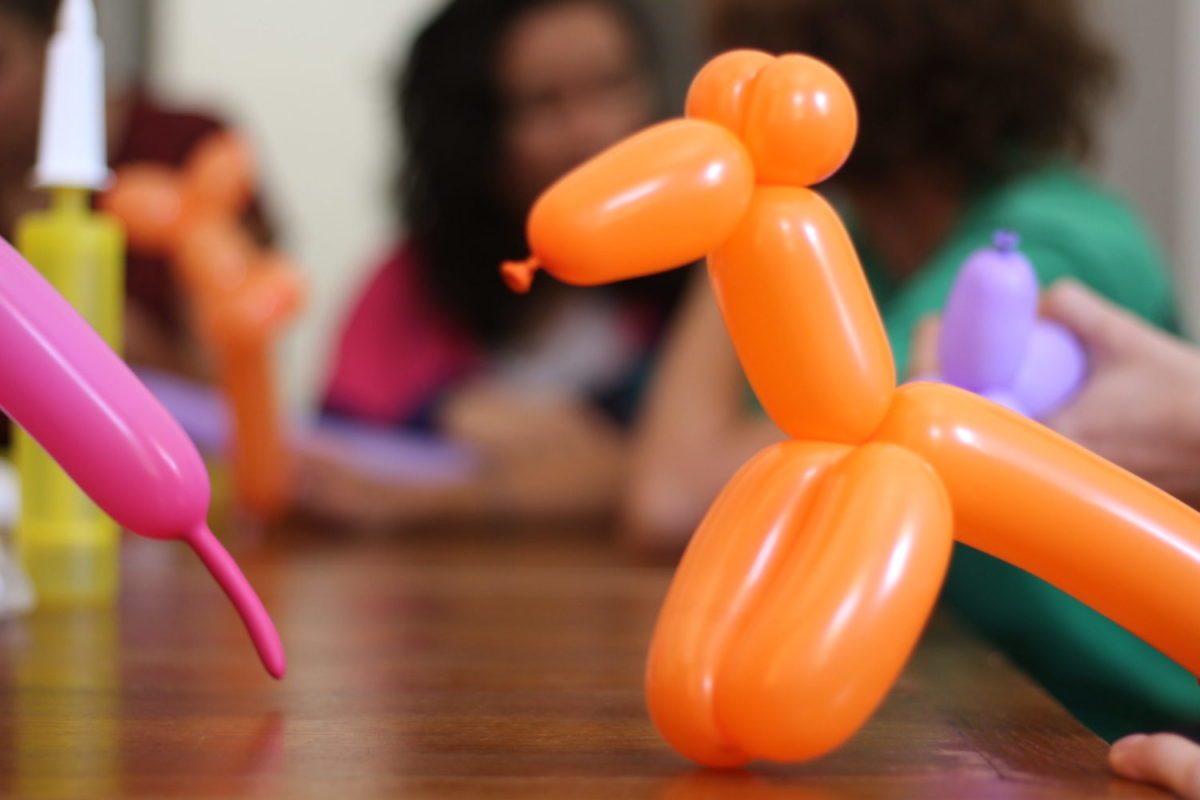


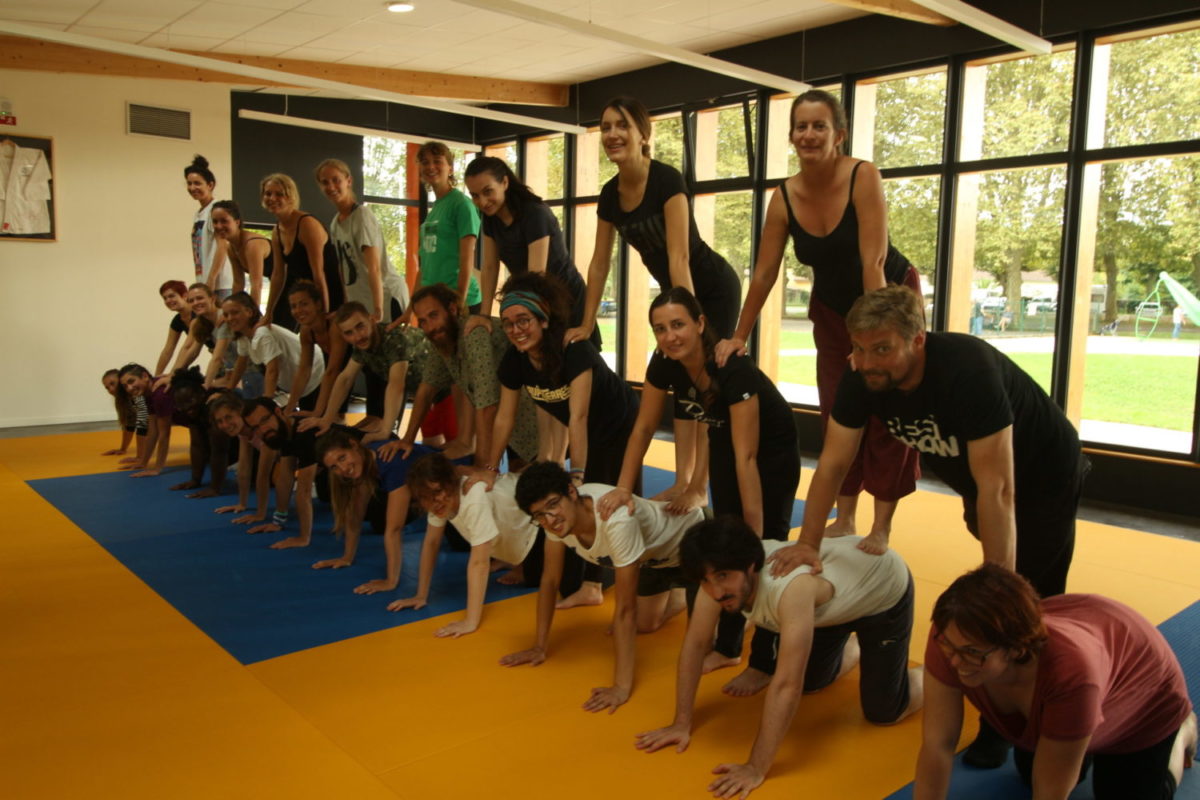
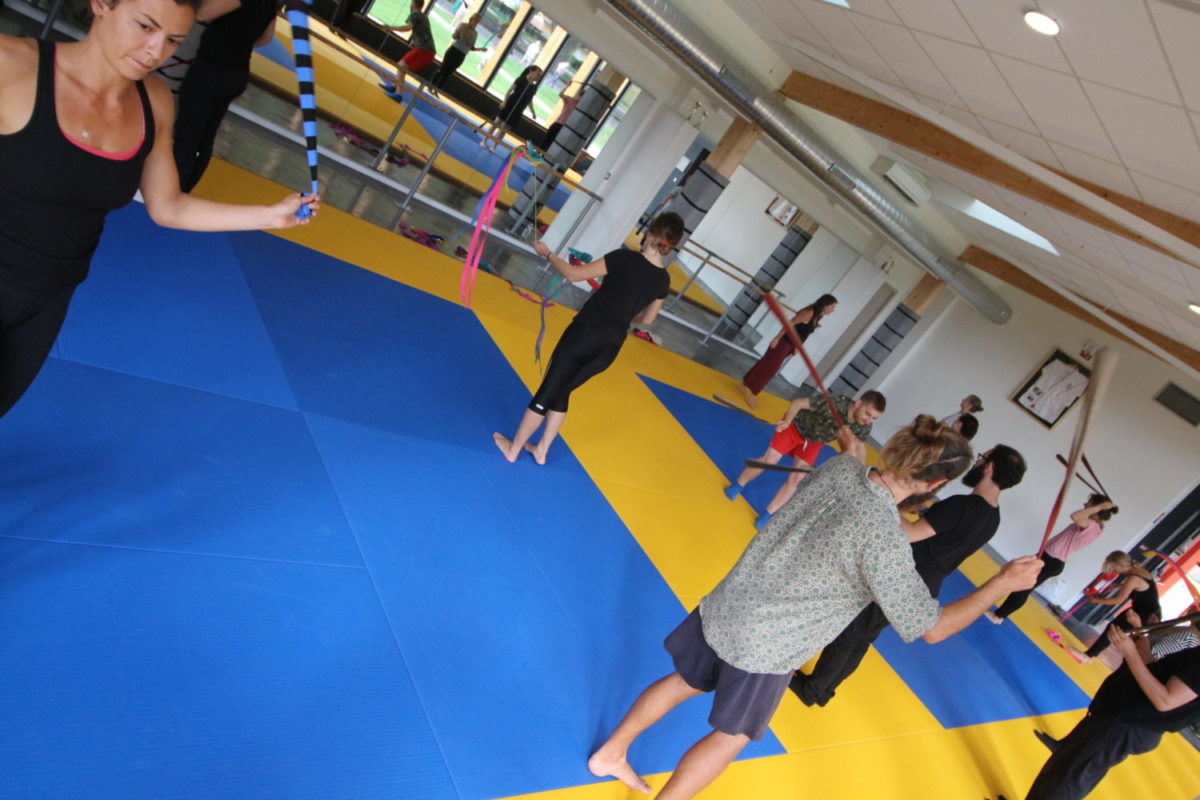
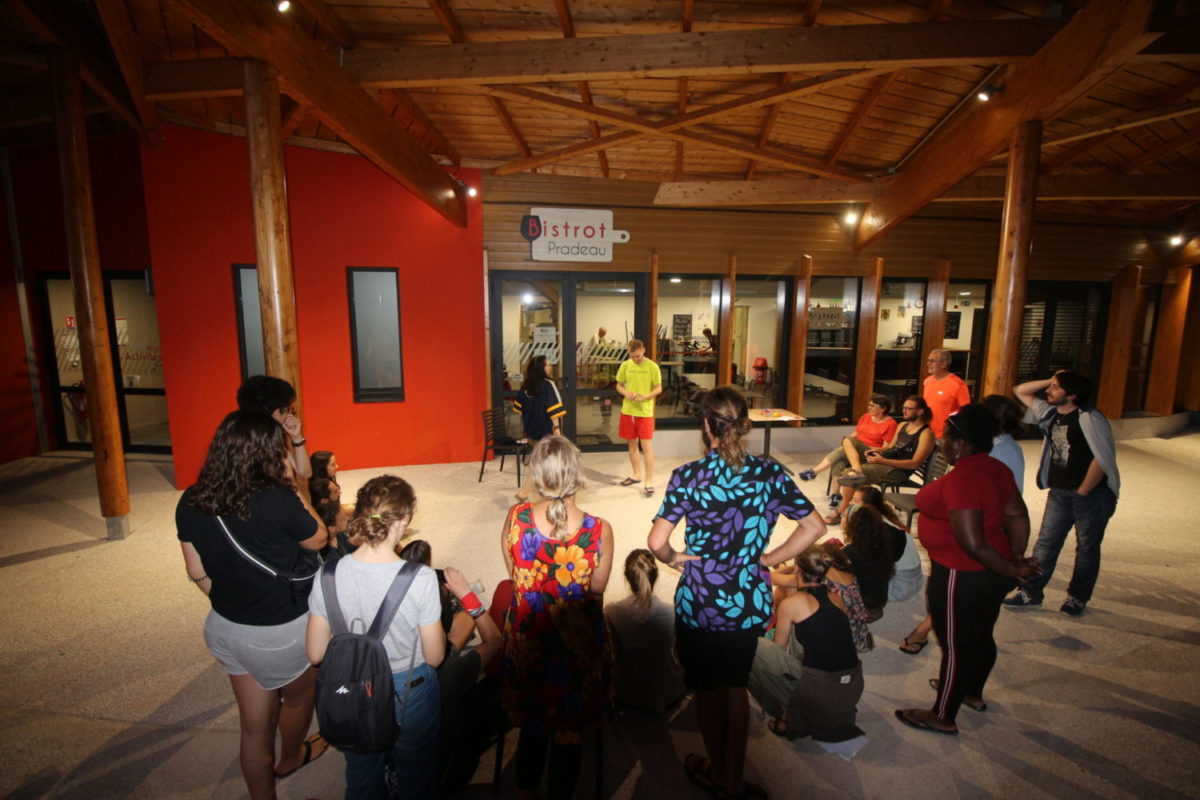

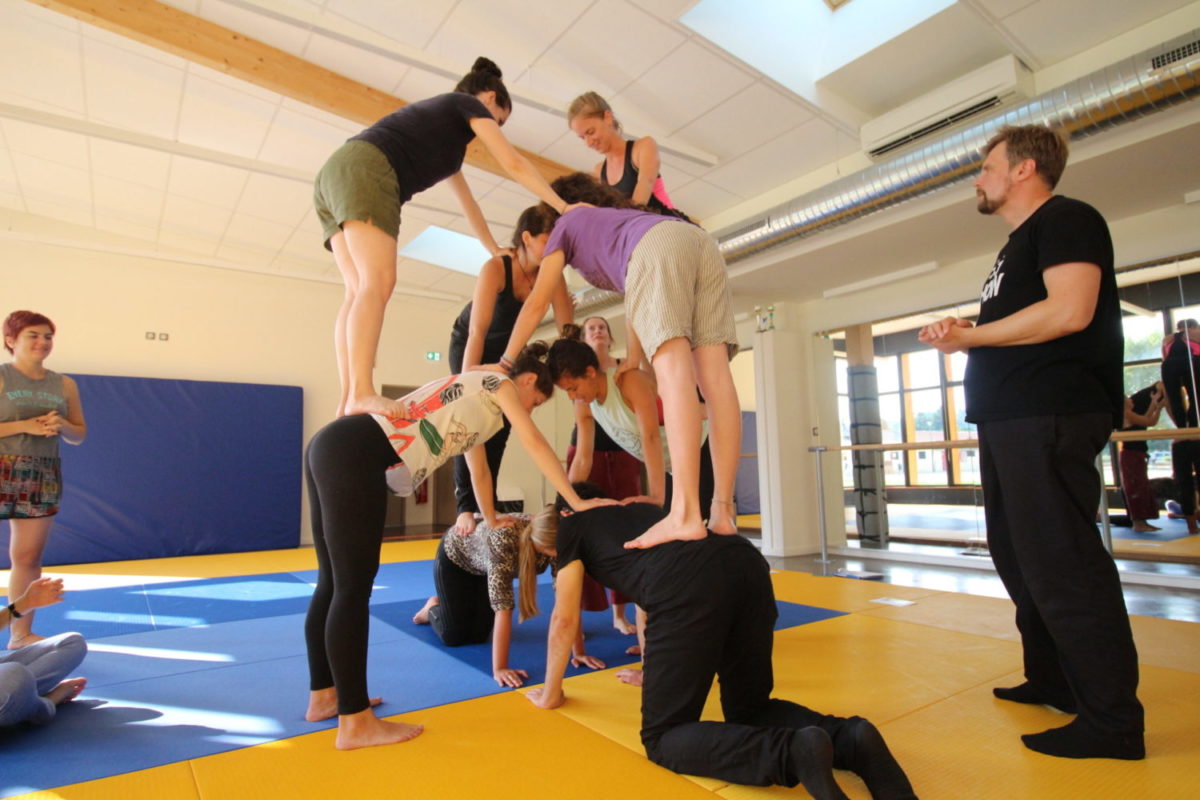
What advice would you give to someone who is just starting to learn circus skills and might be feeling discouraged by the difficulty level?